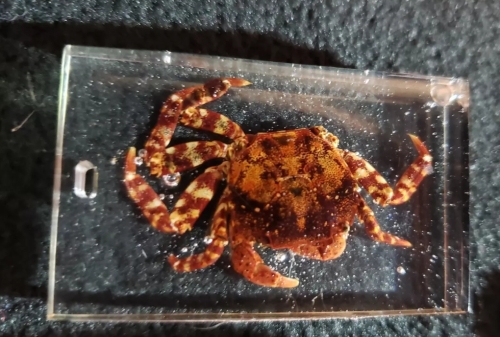As an important part of the Marine ecosystem, crabs are favored by many biological enthusiasts for their unique appearance and diverse species. Crab taxidermy is not only a fun hobby, but also an important tool for scientific research and education.
A specimen of a crab shows the anatomy and life characteristics of the creature, and its form is usually fixed by professional taxidermy methods. First, caught crabs need to be cleaned and disinfected to ensure that surface impurities and microorganisms are removed. Then, it is put into a fixed solution, commonly formalin or alcohol solution, so that it can effectively prevent the growth of bacteria and keep its form stable.
During the immobilization process, the details of the crab's limbs, pincers and shell require special attention. These parts are the core of survival and feeding of crabs, and understanding their structure is helpful to study their living habits and ecological functions. In order to better display the specimen, you can choose to place it in a transparent display box, and provide details such as scientific classification information, habitat and environment of the organism through the specimen label.
Crab specimens are of great value in teaching and scientific research. They provide students with the opportunity to observe and learn, helping them understand the complexity of ecosystems and the interrelationships between species. In the field of scientific research, the existence of specimens also provides biologists with important physical data for population studies and ecological assessments.
With the enhancement of people's awareness of Marine ecological protection, the display of crab specimens is often integrated into the theme of environmental protection. The ecological knowledge behind the specimens can promote the public's understanding of Marine biodiversity, thereby enhancing support for environmental protection.
















